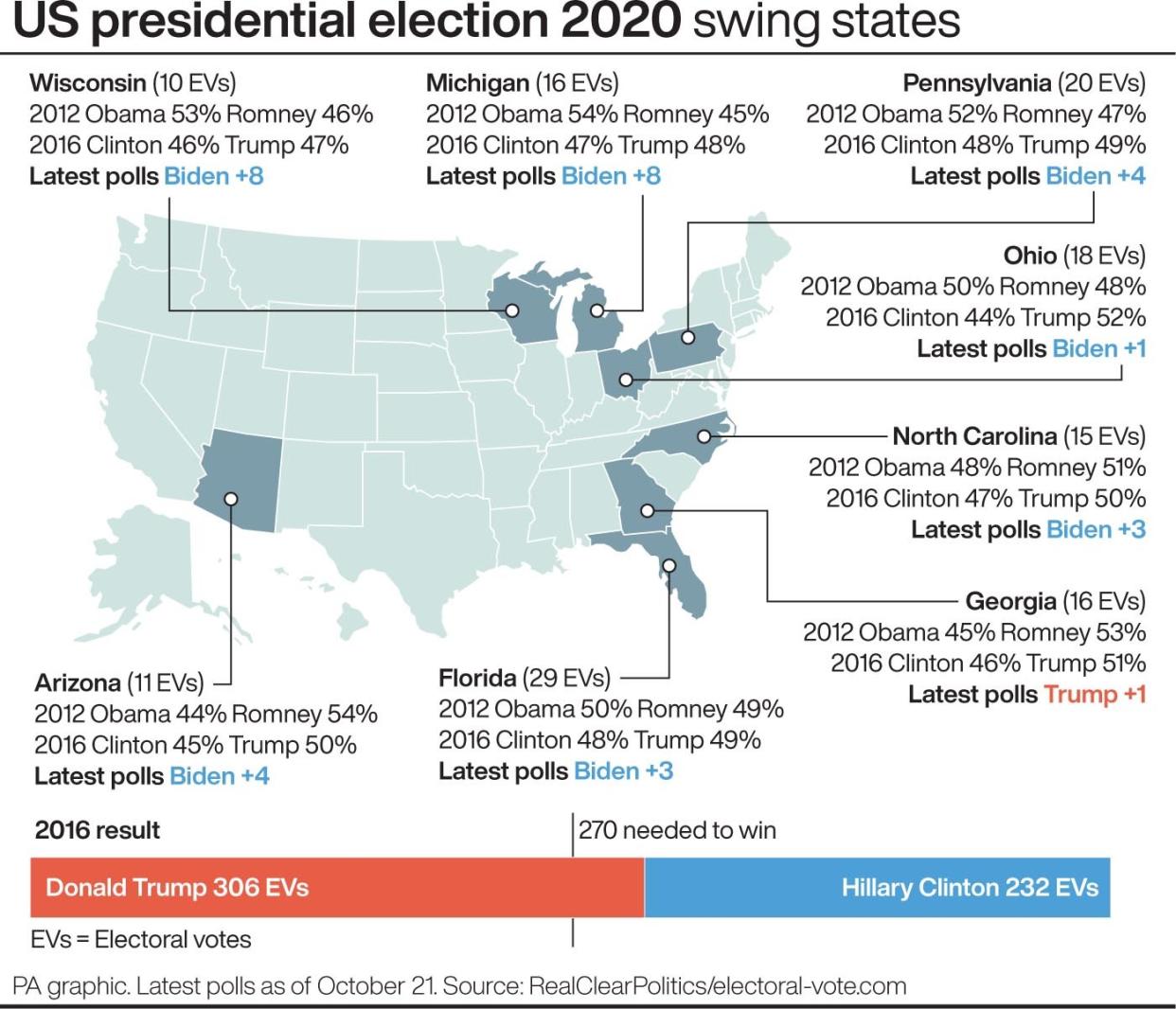What are the swing states that will decide the election of the US president?

Words by Maxime Poul
The US has an unusual voting system; the next president will not be the candidate who wins the most votes, but the one who wins the most key states.
When Americans go to the polls, they are voting on a group of electors, who are gathered in an "electoral college" composed of 538 members.
These electors then vote directly for one of the two candidates who will be elected president if he or she obtains an absolute majority of 270 votes. Each of the 50 states is represented by a number of electors equal to the number of senators and elected officials who represent them in Congress.
As the most populous state, California has 55 electors, while Texas has 38. The least populous states have only three electors.
The top candidate in each state wins all the state's electors – except in Maine and Nebraska, which distribute their electors on a proportional basis. Therefore, it is important to win the populous states. They will get the most votes, because they have more electors.
A dozen swing states
Even more important, though, are the swing states. They're called that because the vote there is not a given for Democrats or Republicans, each of which hold historical strongholds over other states and therefore expect to win their respective states in each election. For example, California generally votes Democrat, and Texas is generally Republican.
There are about a dozen swing states in the US, which include Florida, Pennsylvania, Nevada, Ohio, Colorado and New Hampshire.
These are the states where the outcome is uncertain and are generally decisive in electing the future president of the United States. Candidates attach great importance to this issue and give swing states a lot of focus during their campaigns, even if it means neglecting the states where they are almost certain to win.
Texas: the new swing state?
They should be careful, however, because that's where Hillary Clinton went wrong in 2016, when she spent a lot of time in the swing states. As a result, she neglected states like Michigan or Wisconsin, which had been voting Democrat since 1992 and were therefore a sure thing for her.
In the end, they voted for Donald Trump.
On the other hand, the current President's bet paid off by travelling through these states, which had been destined for the Democrats. This year, it is Texas – usually a Republican state – which could fall into the hands of the Democrats thanks to the Hispanic vote, and thus become a swing state.


